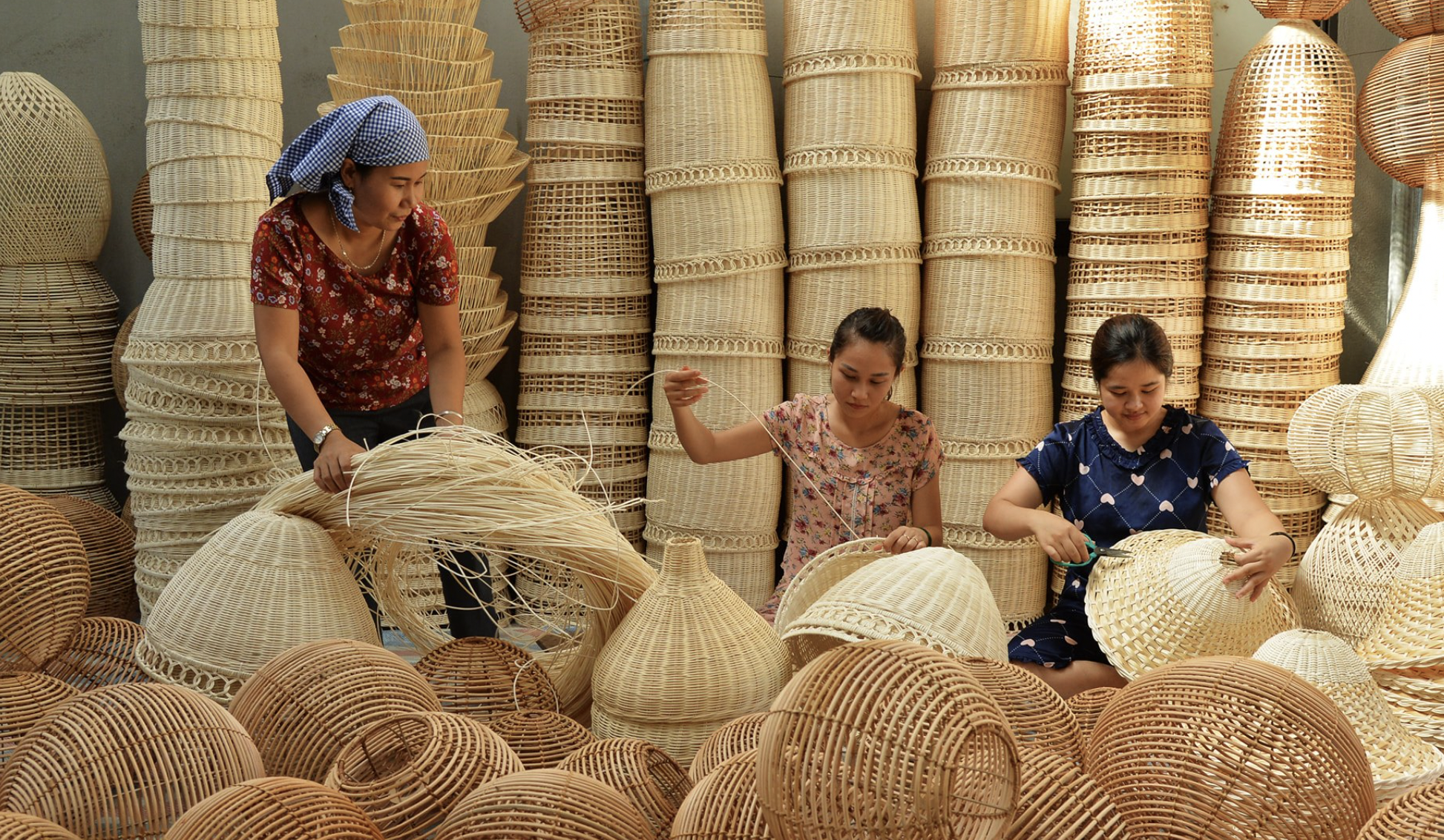Handicrafts are always in the top 10 export products with the highest turnover in Vietnam, bringing in revenue of more than 1.7 billion USD/year.
Worth mentioning, this is also a product group with high profit margins. According to statistics from the Vietnam Handicraft Export Association, every 1 million USD exported in this industry brings in 5 to 10 times more profit than other industries. Not to mention handicraft villages across the country are creating jobs for millions of workers, contributing to ensuring social security.

The Vietnam Craft Villages Association said that many years ago, our country's handicrafts were favored by foreign markets because of their novelty, but now, their appeal has been significantly reduced without a change in model. code, while customer needs are increasingly enhanced. This is one of the biggest barriers on the path to maintaining and expanding the market of Vietnamese handicrafts. Currently, up to 90% of Vietnam's handicraft products are based on designs from foreign customers and use customer labels, because we still lack creativity in product design. If you attend fairs and exhibitions of domestic handicrafts, it is difficult to avoid the feeling of boredom when encountering familiar booths and products such as traditional designs: Four sacred paintings, paintings four quarters (for the mother-of-pearl and lacquer industry); bronze crane, bronze peak (bronze casting industry); mahogany panels, altar cabinets, horizontal panels, couplets (carpentry arts, wood carving); lampshades, tables and chairs (bamboo and rattan industry)…
The reason for this situation is that many craft village households still do not attach importance to designing and improving models, only produce according to old habits, are slow to innovate, and stereotype available models on the market. The vocational training process does not focus on creativity and application of design to meet requirements. The handicraft design team still has many limitations, most of them only work according to orders. Some designs ensure aesthetics and are feasible in the manufacturing process, but cannot be produced in large quantities, so it is difficult to export.
We still know that "good wood is better than good paint" but when competitors' products have similar quality and competitive prices, design is the deciding factor in which item will be selected in the shopping cart. Therefore, people who make handicrafts need to change their thinking about design, packaging, and especially to have a clear distinction between product quality and design quality to add value to their products. product. The difficulty is that because it is still a traditional craft village, the design innovation process must both ensure "modernity", suit tastes and promote its own culture.
To have beautiful designs that suit customers' tastes, designers and manufacturers need to coordinate more closely with each other. Businesses and artisans should enter into joint ventures and associate with art and design training establishments, and regularly organize training for creative teams so that the designs meet the correct criteria and requirements.
In addition, it is necessary to organize more competitions to create designs for handicrafts to select models with high applicability and aesthetics for mass production. Having a beautiful design is not a matter of "one day" but a whole process. Vietnamese handicraft products need worthy attention and care to stand firm in the market and reach out. to the world.
 Factory 1: Chuong My District, Hanoi Capital, Vietnam
Factory 1: Chuong My District, Hanoi Capital, Vietnam
 Factory 2: Kim Son District, Ninh Binh Province, Vietnam
Factory 2: Kim Son District, Ninh Binh Province, Vietnam
 (+84) 912 776 060 -
(+84) 912 776 060 -  sales@vietnamcraft.com.vn
sales@vietnamcraft.com.vn
 www.vietnamcraft.com.vn
www.vietnamcraft.com.vn

Hotline
